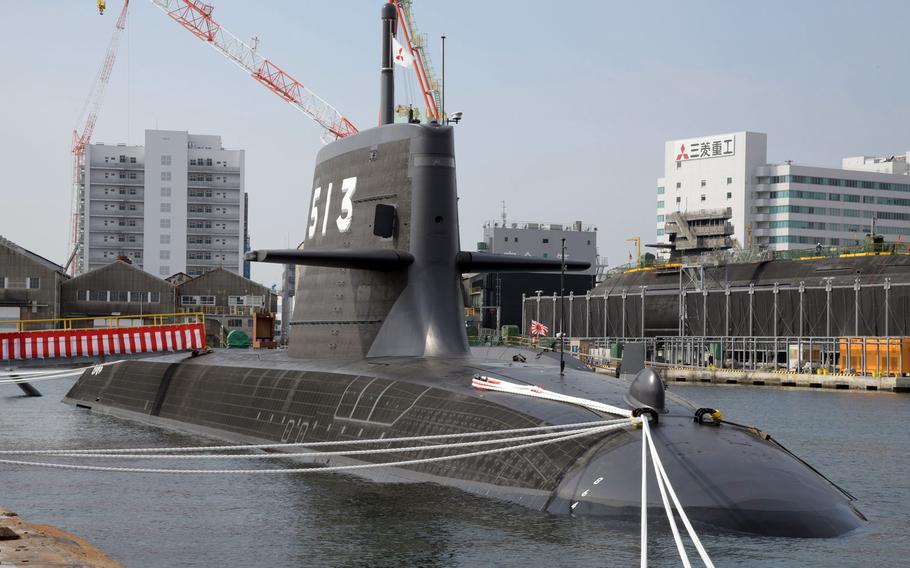Asia-Pacific
Japan inks deal to add submarine-launched missiles by fiscal year 2027
Stars and Stripes April 13, 2023

The JS Taigei, the first of Japan's Taigei-class attack submarines, was built by Mitsubishi Heavy Industries at its shipyard in Kobe, Hyogo prefecture. The submarine was commissioned in March 2022. (Japan Maritime Self-Defense Force)
CAMP FOSTER, Okinawa – Tokyo is moving forward with plans to field submarine-launched missiles capable of striking enemy ships as it looks to strengthen its counterstrike capabilities and standoff missile defense.
The Ministry of Defense contracted with Mitsubishi Heavy Industries on April 7 to supply and test missile prototypes by fiscal 2027, the ministry said in news release posted on its website Tuesday.
The release did not specify how much of the $595 million allocated for the project will go to the Tokyo-based multinational firm.
A ministry spokesman declined to comment Thursday when reached by phone. A spokesman for Mitsubishi Heavy did not respond to a request seeking comment that day.
The island nation is seeking the technology to fire the missiles from a torpedo tube and to also launch them vertically, the statement said. All 22 of Japan’s submarines are equipped with torpedo tubes, but none are capable of firing a missile vertically out of the water to strike a target.
“Submarines operate highly secretively; by arming them with longer range missiles this characteristic will be more effective and can make things more difficult for our enemies,” Defense Minister Yasukazu Hamada said at a parliamentary committee meeting on Dec. 8.
Development of long-range, sub-borne missiles was announced in December in a series of security documents outlining Japan’s strategy to develop better “stand-off” capabilities. Tokyo allocated $441 million for fiscal 2023, the statement said.
Funds for testing will be assigned at a later date, the statement said. Japan's fiscal year runs from April 1 through March 31.
Mitsubishi Heavy Industries, a corporation with a diverse product portfolio but prominent in Japan’s defense industry, can be traced to an 1857 ironworks foundry in Kyushu, the southernmost of Japan’s four main islands, according to a history on the company’s website.
During World War II, the company built the famed battleship Musashi, as well as other ships, trains and aircraft. In the current era, it has built ships and submarines for the Maritime Self-Defense Force and fighters like the F-2, F-4EJ Phantom II and F-15J Eagle for the Air Self-Defense Force.
Its defense contracts include upgrading Japan’s Type-12 surface-to-ship missiles and mass-producing supersonic glide bombs, the defense statement said.
Japan approved a record defense budget of about 51.4 billion for fiscal year 2023 that emphasized counterstrike capabilities and strengthened standoff air and missile defense. Its rapid hike in defense spending is due in part to a perceived threat from China, a rising power with a rapidly expanded military of its own.
The Chinese military presence is increasing in the seas east of the Nansei chain and around Taiwan with naval drills, overflights and transits of key straits that give way to the Pacific Ocean. The chain includes Okinawa and stretches from Kyushu to Taiwan.
In response, Japan has built military bases in the Nansei, deployed troops and announced it intends to position surface-to-air missiles in the region.
The Maritime Self-Defense Force’s submarine fleet is split among three classes in two groups on main-island Japan, according to the service’s website. Submarine Flotilla 1 is headquartered at Kure in Hiroshima prefecture, and Flotilla 2 is at Yokosuka in Kanagawa prefecture.